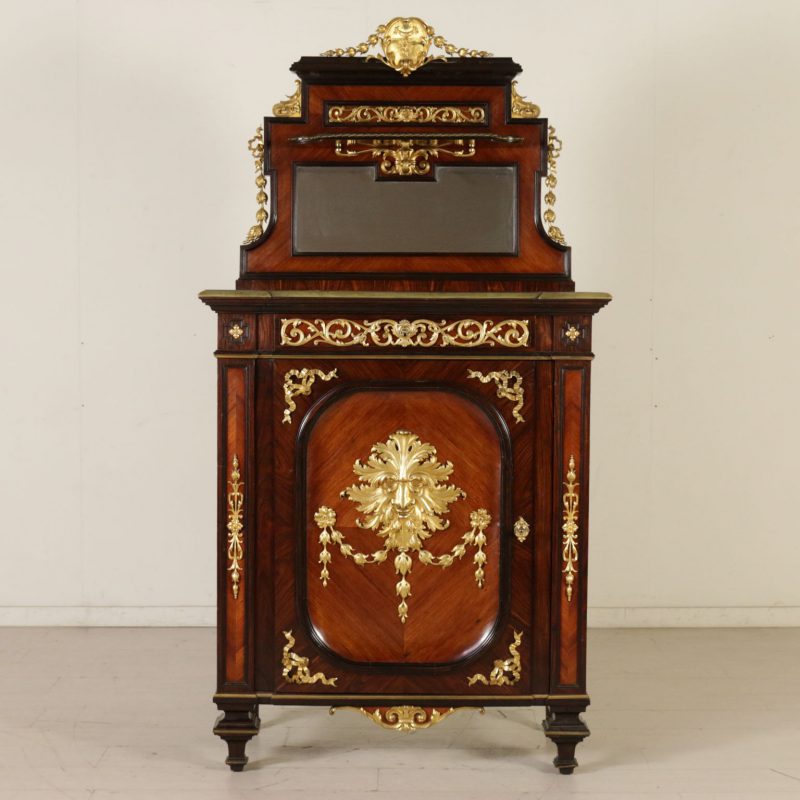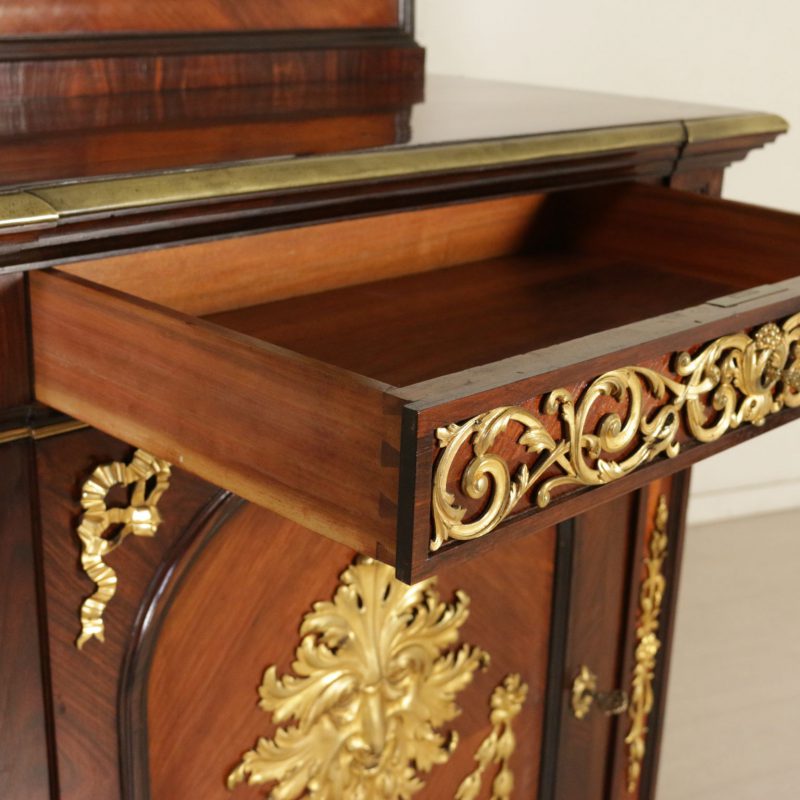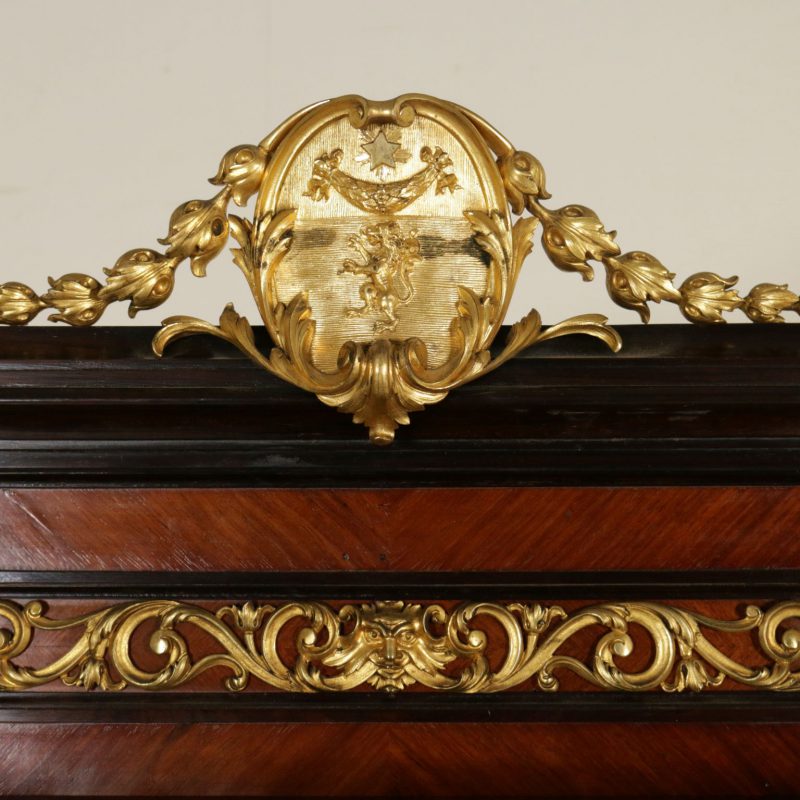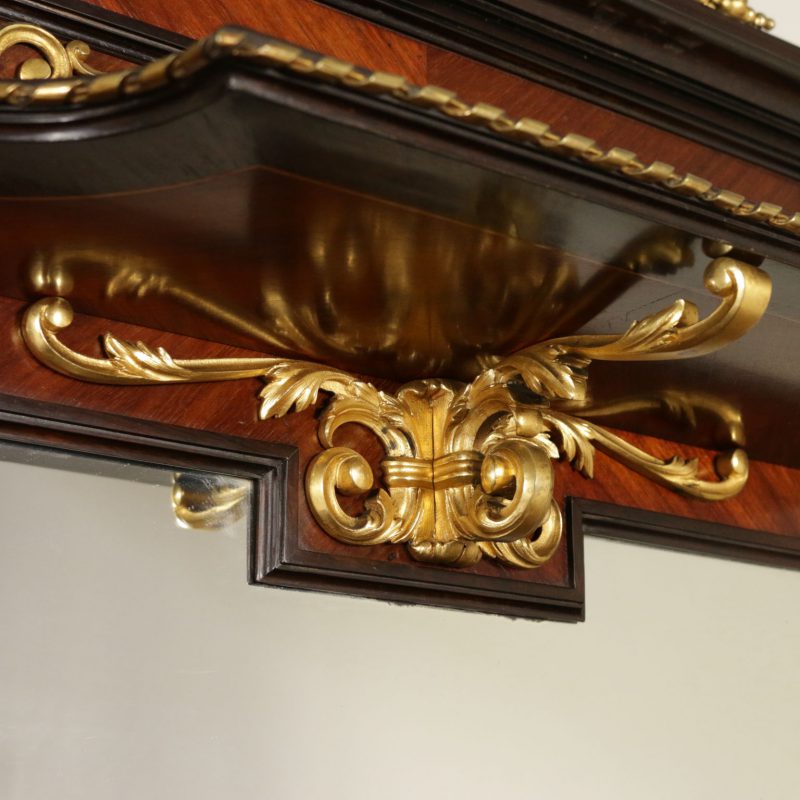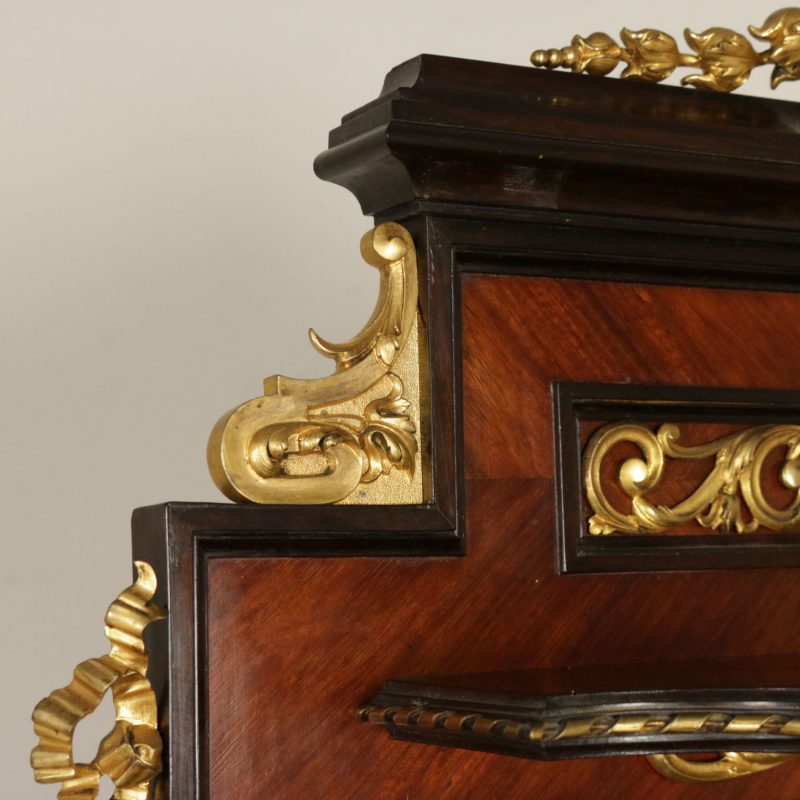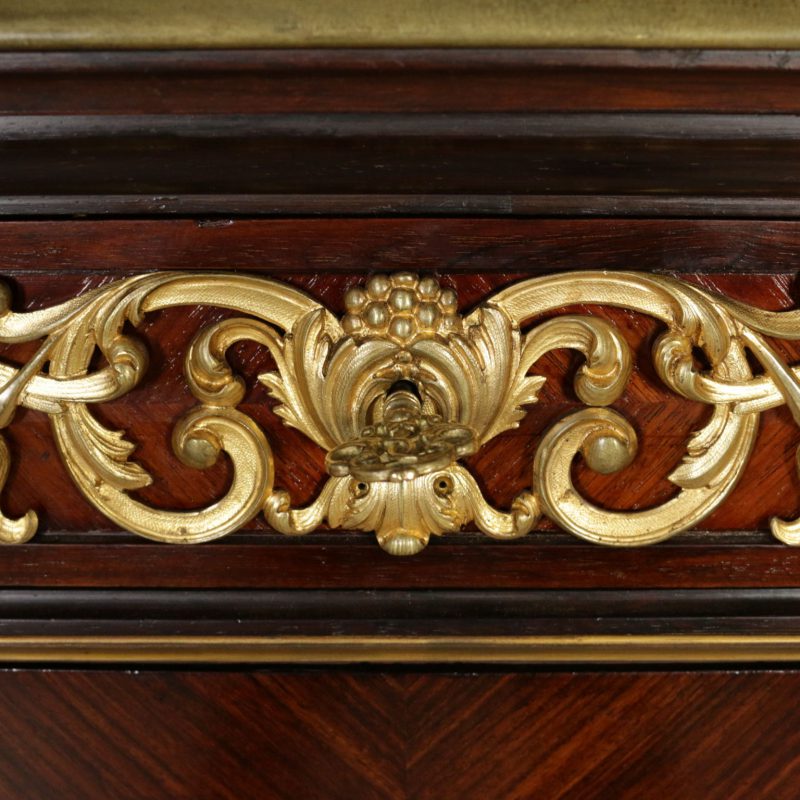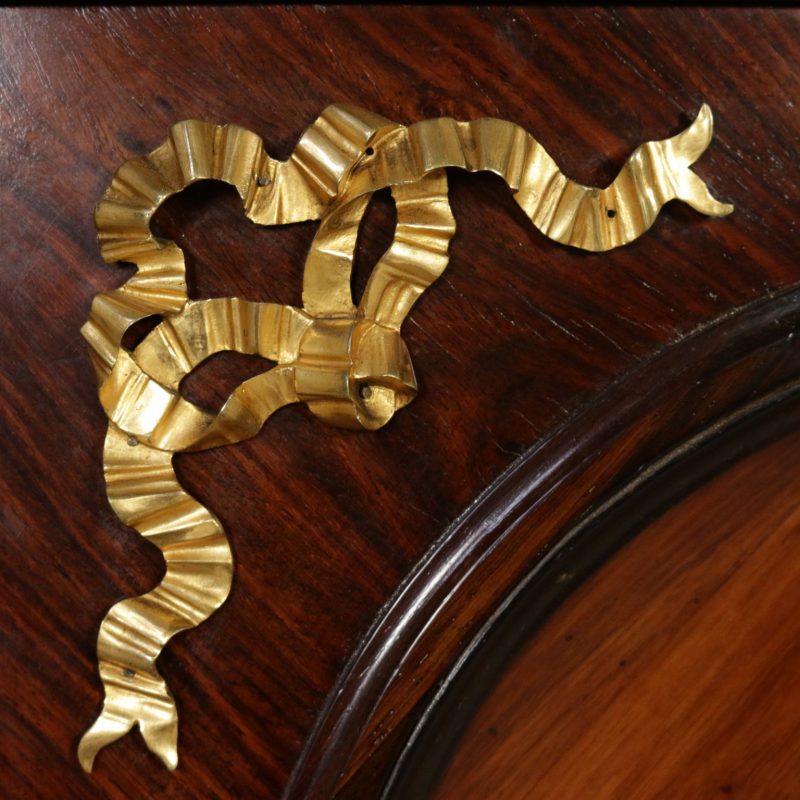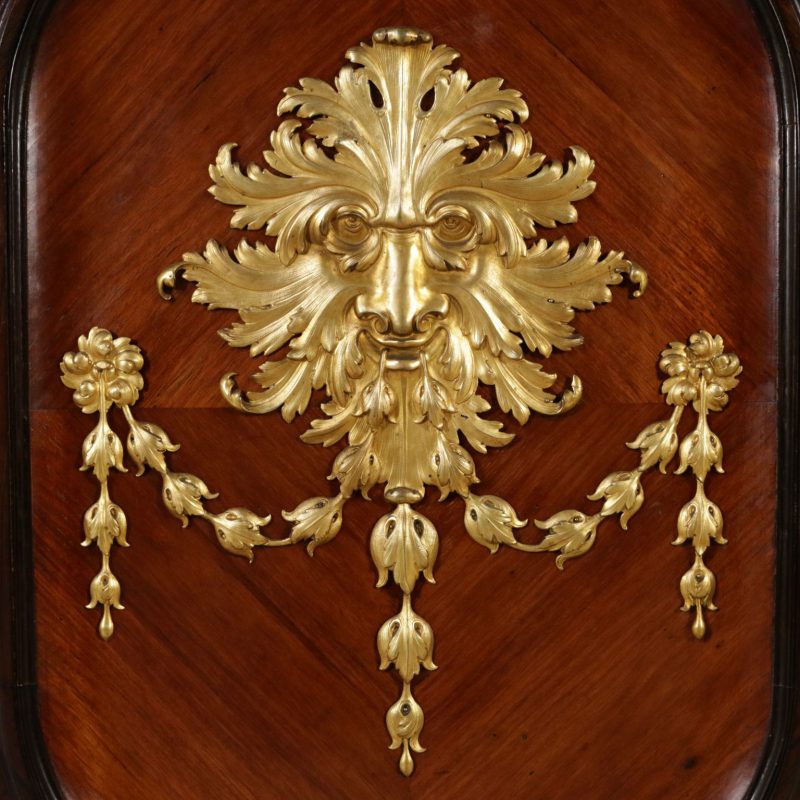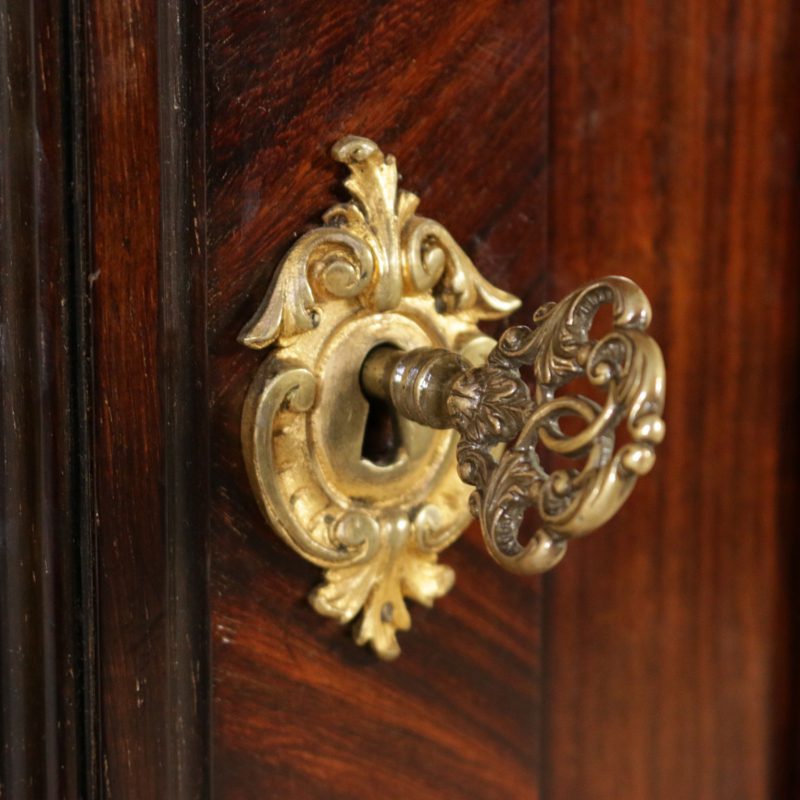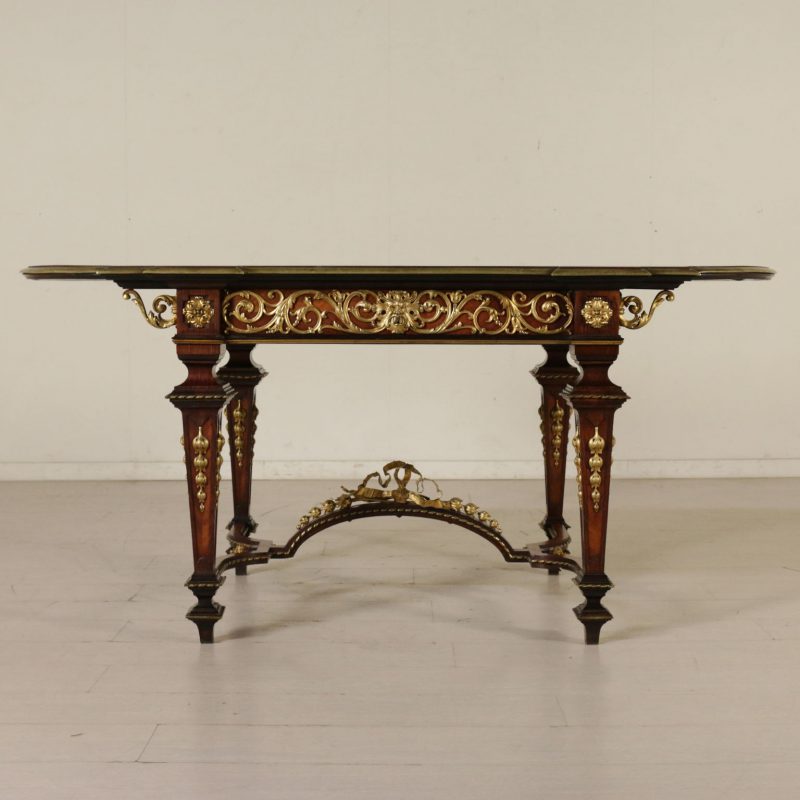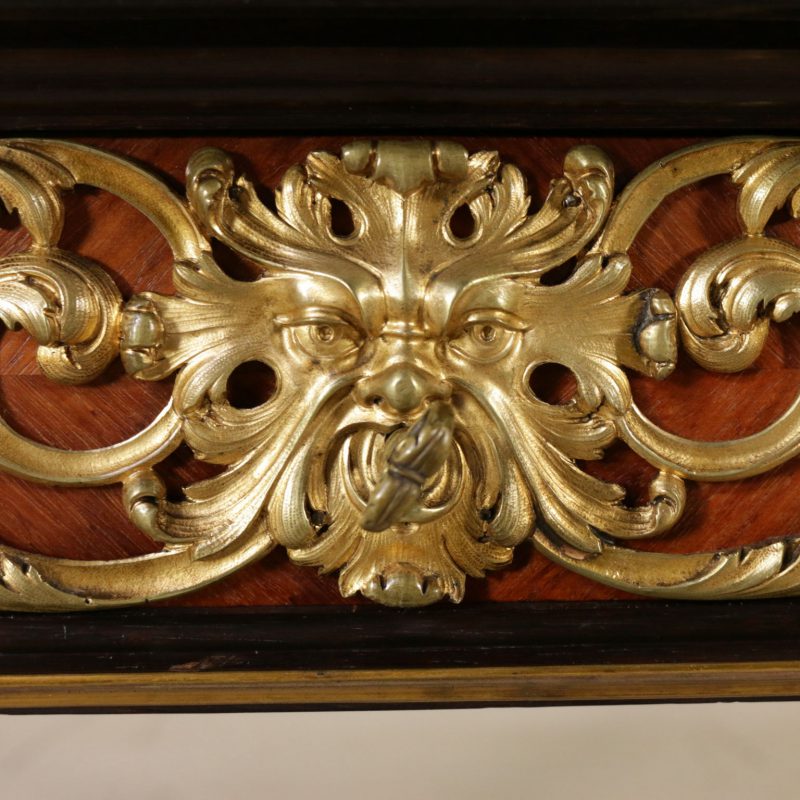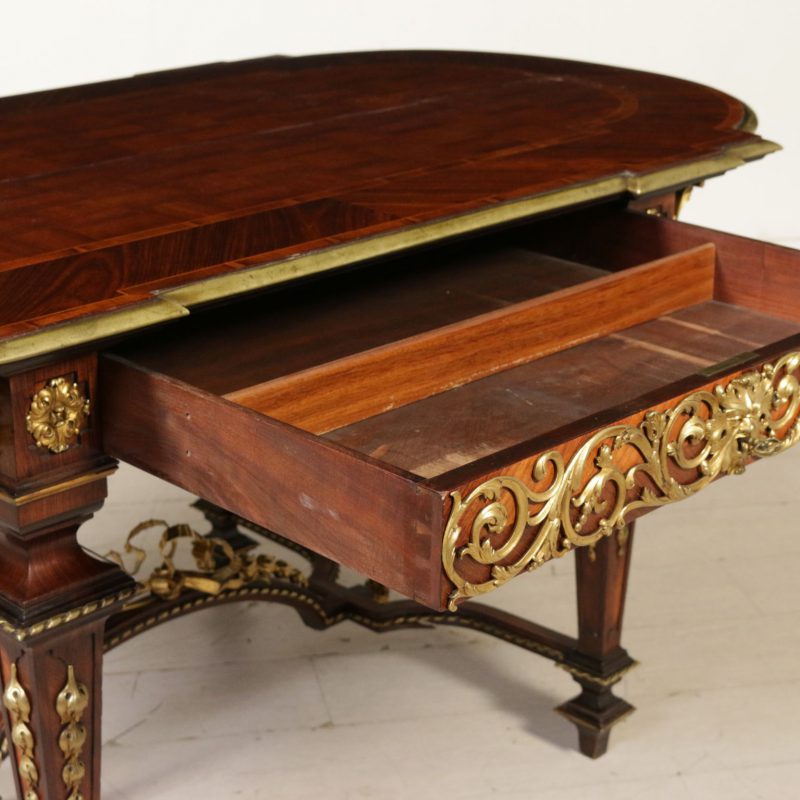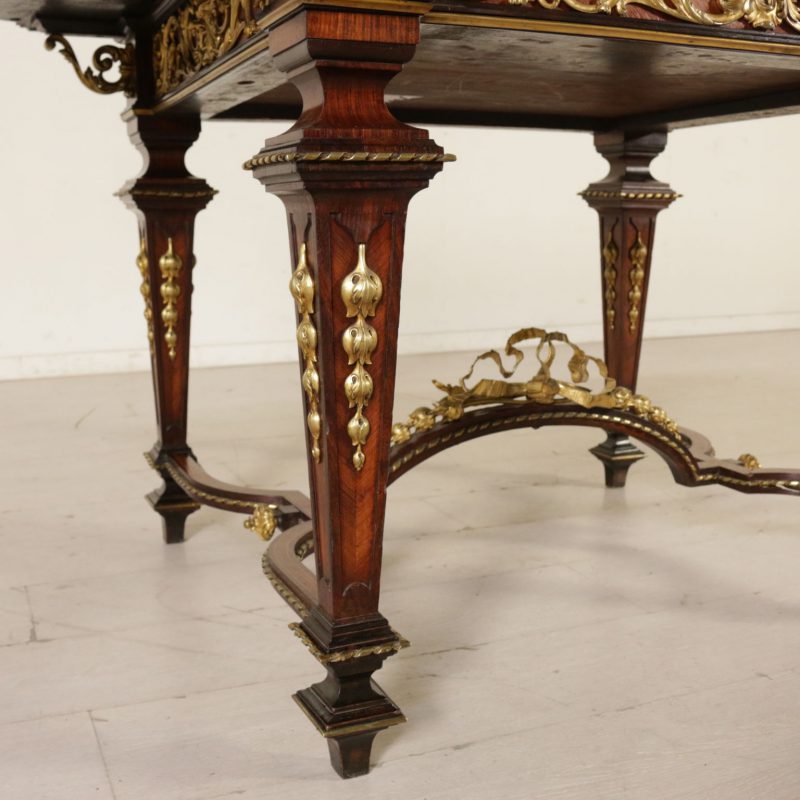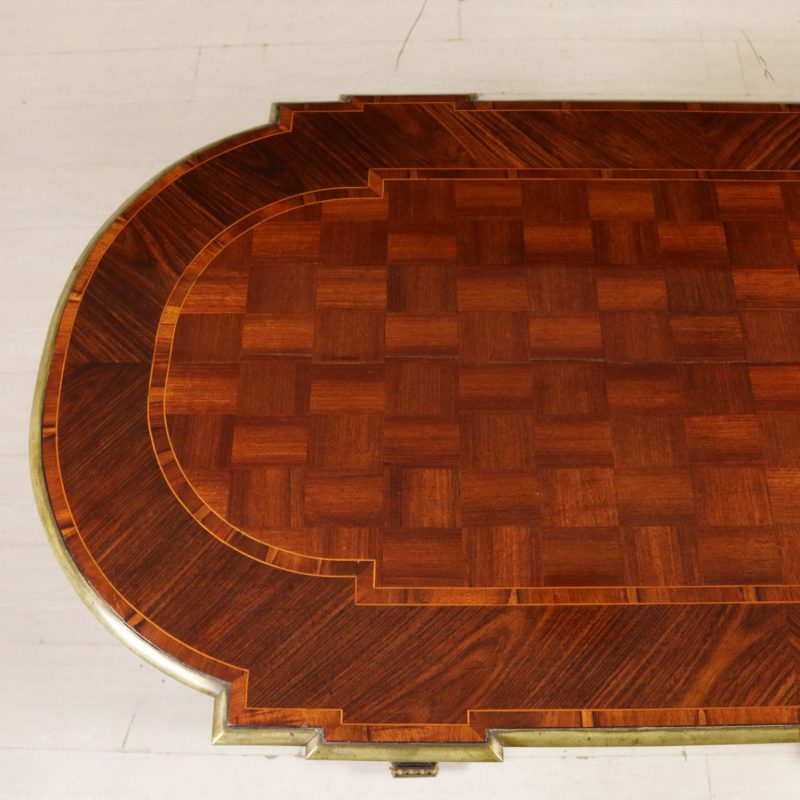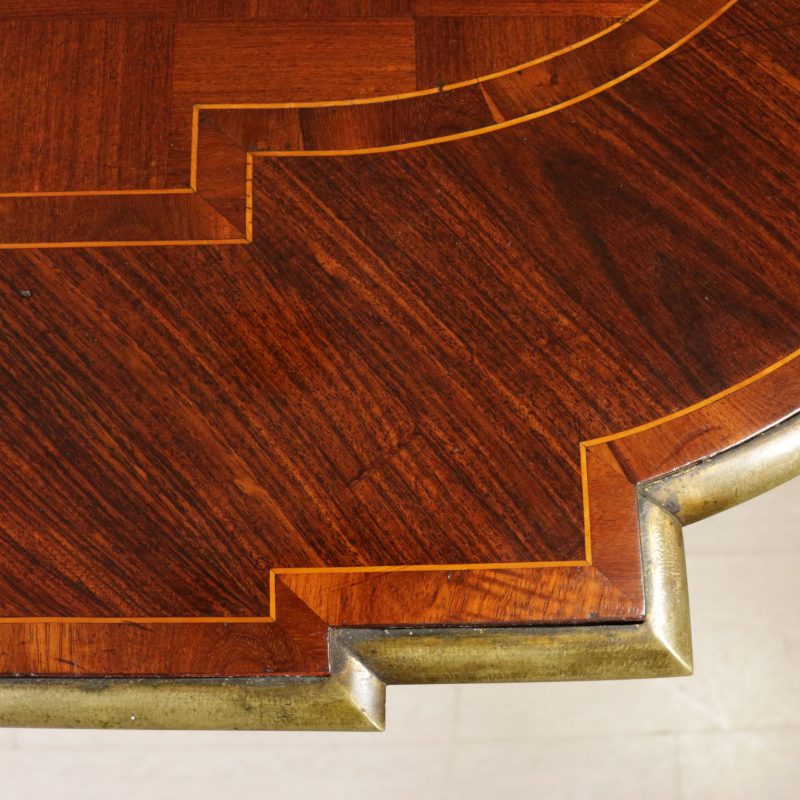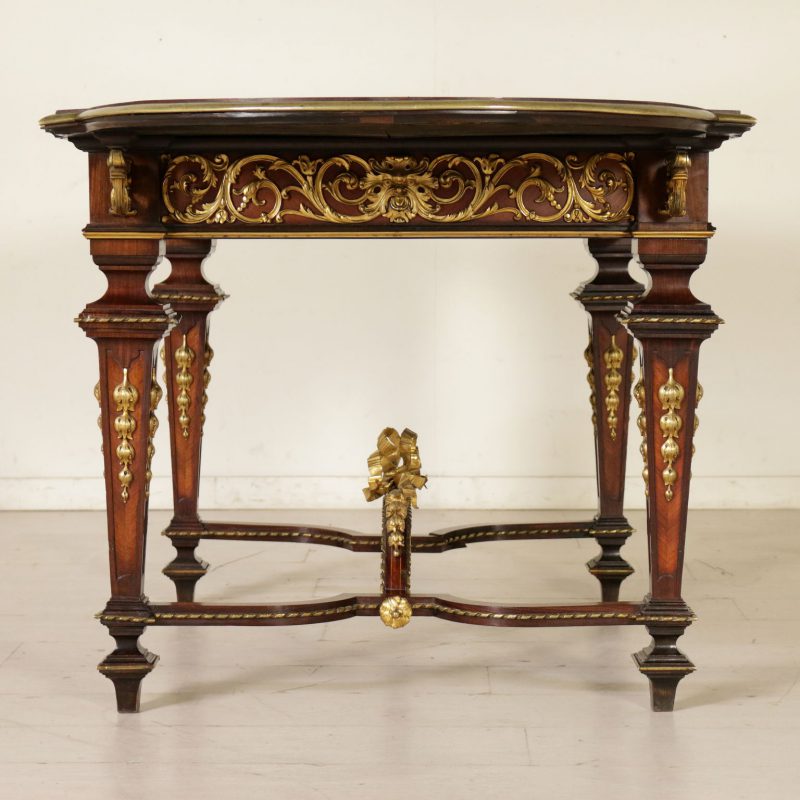Giuseppe Speluzzi: a Milanese excellence of the late nineteenth century
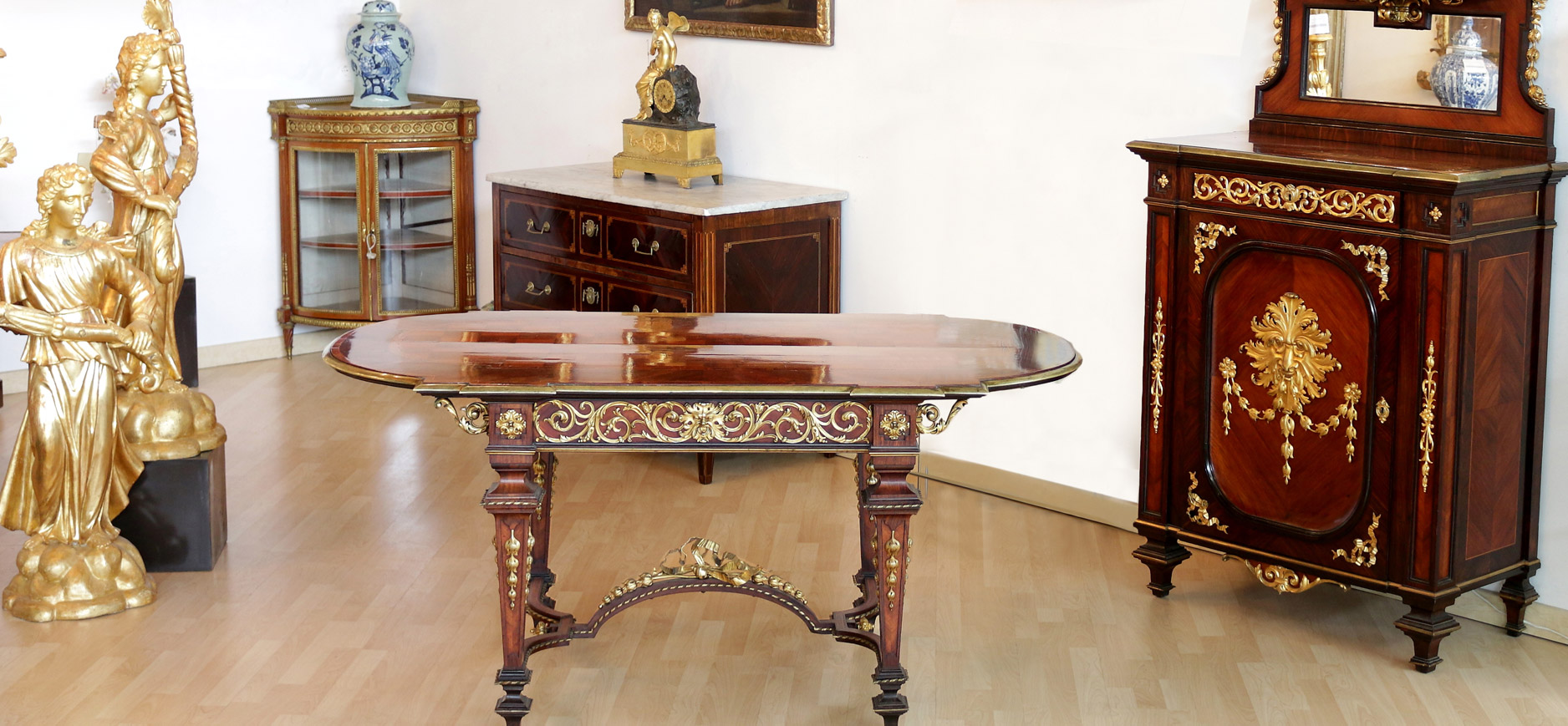
There are artists closely tied to their city, and cities that seem destined to become hubs of excellence in craftsmanship.
 This is the case with Milan and a great cabinetmaker whom we have the chance to learn more about through two of his precious works featured in the Di Mano in Mano catalog.
This is the case with Milan and a great cabinetmaker whom we have the chance to learn more about through two of his precious works featured in the Di Mano in Mano catalog.
We are speaking of Giuseppe Speluzzi, a major figure in the golden age of Lombard artistic craftsmanship, especially in Milan.
Speluzzi’s connection to Milan is evident even in his workshop’s emblem, which displays the city’s symbol at its center. It is no coincidence that, in 1868, the City of Milan entrusted him with creating a precious cabinet as a gift for Queen Margherita of Savoy for her wedding.
Speluzzi opened his workshop in Milan in 1837. A skilled carver, he began his career crafting furniture decorated with inlays in the Maggiolini style. However, his style soon adapted to the changing tastes Milan imported from Northern Europe.
This was the era of the great World’s Fairs in London (1851 and 1862) and Paris (1855, 1867, 1878). The international upper bourgeoisie demanded a new style that combined opulence with the modern comforts of the time.
Gone were the overused Late Empire styles, replaced by a stylistic revival that led to an eclectic historicism. The homes of the late 19th-century upper bourgeoisie saw the emergence of “meticulously detailed, lavish, phantasmagorical” interiors (Benjamin 1955), with striking revivals of medieval, Renaissance, and Rococo designs.
Parisian fashion launched a Europe-wide passion for rich metal accents and precious material inlays.

In Italy, Milan was the first to adopt this shift in taste.
In a review of the 1857 Brescia Exhibition, Zanardelli stated, “Milan’s luxury furniture can perhaps compete in solidity, precision, elegance, and variety with Paris itself, and from the workshops of Speluzzi, Colombo, and Fontana come works that are certainly no less exquisite than the finest creations of the sixteenth century.”
Here we find Giuseppe Speluzzi, renowned for his carving, brass and tortoiseshell inlays in the boule style, and applications of precious metals and gilded bronze. His clients were the wealthy noble and bourgeois families of Milan. His workshop was capable of meeting the most demanding commissions. Speluzzi employed a team of top artisans: cabinetmakers, bronzers, carvers, and gilders. He also had connections with Florence for hard stone tabletops, as demonstrated by his most outstanding piece, the table preserved at the Poldi Pezzoli Museum.

Speluzzi’s work is particularly tied to this house: his name appears countless times in the payroll of the Poldi Pezzoli Archive. He worked there for years, restoring and adapting antique furniture and furnishing some of the most famous rooms in the house.
The Poldi Pezzoli House, along with the Bagatti-Valsecchi brothers’ house, represents one of the most exemplary “galleries” of Lombard upper bourgeois taste in the second half of the 19th century. Other Milanese houses also benefited from Speluzzi’s work: the two pieces at Di Mano in Mano bear witness to this.
They are two office pieces, a desk and a sideboard derived from a French bureau plat model with a cartonnier. The furniture is completely veneered in rosewood with carved solid wood moldings and frames. The table features a marquetry top, and both pieces are adorned with beautiful gilded bronze decorations, very similar in style to those of the Poldi Pezzoli House table.
On the Cartonnier, a highly refined heraldic crest is carved, with quality rivaling that of Paris: a rampant lion, a star, a sun. It is the coat of arms of the Bellinzaghi family, and its presence gives us a clue about the circumstances surrounding the commission of this masterpiece.
The banker Giulio Bellinzaghi, a senator of the Kingdom and mayor of Milan, welcomed Emperor William I to the city. It was 1875: for his merits, King Victor Emmanuel II made him a Count.
And what better way to celebrate and highlight this entry into the prestigious Milanese nobility than by commissioning luxurious furniture from the decorator of the Poldi Pezzoli, Crespi, and many other distinguished Milanese families? The ultra-Milanese brand of the Speluzzi workshop certifies membership in the most exclusive circle of Italy’s most European city.


